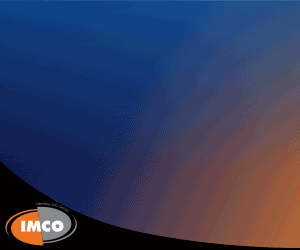I’ve used a variety of software during the 30-plus years I’ve been involved with manufacturing. That includes standard products for creating documents, spreadsheets and databases, and, in order of appearance, packages for handling material requirements, manufacturing resources and enterprise resource planning. CAD/CAM software, however, tops my usage list.
The first CAM “package” I used was the APT programming language, which had no graphical interface. You wrote the program, sent the information via a slow modem, plotted the points on a multiple-pen plotter and then received the machine code. I never exceeded 3-axis programming. Programming capabilities have come a long way since then, including ones for 5-axis and multitask machining, Swiss-style turning and wire EDMing.
CAM software, these days, is often priced in the vicinity of a lower-end motorcycle or compact car—sometimes a luxury car! Last year, I needed to purchase a CAM package for our facility and contacted several well-known and reputable developers. Prices ranged from $12,000 to $16,000 for two seats of basic mill/turn software that did not include 5-axis contouring. Trust me though, if you do a lot of programming or mold and die work, the price is well worth it.
After researching how much programming we actually do at our facility, the cost wasn’t justifiable. The programs for our standard products have already been written. We may make 10 to 20 newly designed parts annually.
I decided to keep looking and found a few CAD/CAM packages online from $1,500 to $3,000 that would handle milling and turning. For wire EDM, I would have to wing it. Unfortunately, the customer support was terrible; I received no replies to my e-mails and phone calls. The downloadable product demos showed products with promise. But what good is it if I can’t speak to anyone?
Then I Googled “wire EDM programming software” and found a software package from Kentech Inc. that looked like it would do what I wanted, including milling, drilling, tapping, ID and OD grooving, boring, turning—even C-axis—and wire EDM programming. However, it does not provide 3-D verification or use solid models. The software outputs code compatible with Fanuc, Okuma, Fadal and Haas controls. Much of the programming is done by filling in the blanks. It will output code via Fanuc canned cycles or long hand, where every step is listed.
When I contacted the developer about its CAM software, the company promptly replied and fully answered my questions. By completing a brief online form, I was able to view a demo or have a WebEx one-on-one demo of the KipwareM milling, KipwareT turning and KipwareEDM wire EDMing software packages. Waterjet programming software is also available. Besides CNC programming software, the company offers business, training and conversion software.
After purchasing two seats of the software for about $1,000, which included unlimited technical support and didn’t require maintenance agreements, I reviewed the online training and was up and programming. Upgrades are available for $35 to $145, depending on the software. Upgrades happen every year or so.
Although this software is adequate for our purposes and can be used on the shop floor, it is not for everyone. I’ve worked for companies that needed the high-dollar packages to effectively compete. But if you are looking for low-budget CAM software and aren’t performing 5-axis machining, check the Web for alternatives to full-blown CAM packages.
Related Glossary Terms
- 3-D
3-D
Way of displaying real-world objects in a natural way by showing depth, height and width. This system uses the X, Y and Z axes.
- boring
boring
Enlarging a hole that already has been drilled or cored. Generally, it is an operation of truing the previously drilled hole with a single-point, lathe-type tool. Boring is essentially internal turning, in that usually a single-point cutting tool forms the internal shape. Some tools are available with two cutting edges to balance cutting forces.
- computer numerical control ( CNC)
computer numerical control ( CNC)
Microprocessor-based controller dedicated to a machine tool that permits the creation or modification of parts. Programmed numerical control activates the machine’s servos and spindle drives and controls the various machining operations. See DNC, direct numerical control; NC, numerical control.
- computer-aided manufacturing ( CAM)
computer-aided manufacturing ( CAM)
Use of computers to control machining and manufacturing processes.
- electrical-discharge machining ( EDM)
electrical-discharge machining ( EDM)
Process that vaporizes conductive materials by controlled application of pulsed electrical current that flows between a workpiece and electrode (tool) in a dielectric fluid. Permits machining shapes to tight accuracies without the internal stresses conventional machining often generates. Useful in diemaking.
- gang cutting ( milling)
gang cutting ( milling)
Machining with several cutters mounted on a single arbor, generally for simultaneous cutting.
- grooving
grooving
Machining grooves and shallow channels. Example: grooving ball-bearing raceways. Typically performed by tools that are capable of light cuts at high feed rates. Imparts high-quality finish.
- inner diameter ( ID)
inner diameter ( ID)
Dimension that defines the inside diameter of a cavity or hole. See OD, outer diameter.
- milling
milling
Machining operation in which metal or other material is removed by applying power to a rotating cutter. In vertical milling, the cutting tool is mounted vertically on the spindle. In horizontal milling, the cutting tool is mounted horizontally, either directly on the spindle or on an arbor. Horizontal milling is further broken down into conventional milling, where the cutter rotates opposite the direction of feed, or “up” into the workpiece; and climb milling, where the cutter rotates in the direction of feed, or “down” into the workpiece. Milling operations include plane or surface milling, endmilling, facemilling, angle milling, form milling and profiling.
- outer diameter ( OD)
outer diameter ( OD)
Dimension that defines the exterior diameter of a cylindrical or round part. See ID, inner diameter.
- tapping
tapping
Machining operation in which a tap, with teeth on its periphery, cuts internal threads in a predrilled hole having a smaller diameter than the tap diameter. Threads are formed by a combined rotary and axial-relative motion between tap and workpiece. See tap.
- turning
turning
Workpiece is held in a chuck, mounted on a face plate or secured between centers and rotated while a cutting tool, normally a single-point tool, is fed into it along its periphery or across its end or face. Takes the form of straight turning (cutting along the periphery of the workpiece); taper turning (creating a taper); step turning (turning different-size diameters on the same work); chamfering (beveling an edge or shoulder); facing (cutting on an end); turning threads (usually external but can be internal); roughing (high-volume metal removal); and finishing (final light cuts). Performed on lathes, turning centers, chucking machines, automatic screw machines and similar machines.
- web
web
On a rotating tool, the portion of the tool body that joins the lands. Web is thicker at the shank end, relative to the point end, providing maximum torsional strength.
- wire EDM
wire EDM
Process similar to ram electrical-discharge machining except a small-diameter copper or brass wire is used as a traveling electrode. Usually used in conjunction with a CNC and only works when a part is to be cut completely through. A common analogy is wire electrical-discharge machining is like an ultraprecise, electrical, contour-sawing operation.


 ARTICLES
ARTICLES ARTICLES
ARTICLES

